Copyright 2005 -- Rachel Saunders
|
Fatehpur SikriFatehpur Sikri was the capital of the Mughal empire between 1571 and 1585, during the reign of Akbar the great. Although beautiful, and incredible from an architectural viewpoint, someone failed to consulted any environmental specialists when they chose the site of the city. Fatehpur Sikri was built in an area that suffered severe water shortages and was thus abandoned shortly after Akbar's death. --> Previous --> Next --> Home --> More Adventures --> India Index |
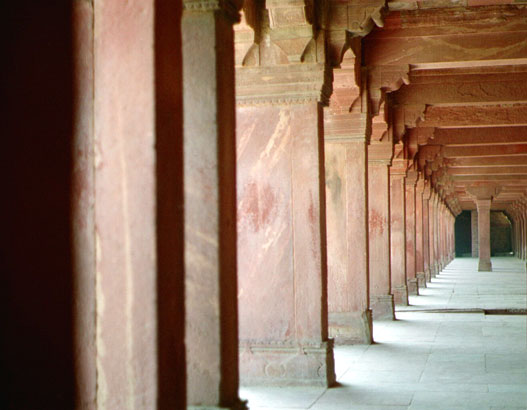
|
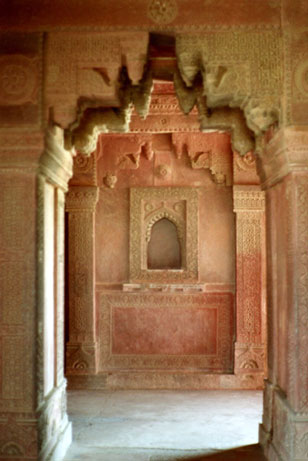
|
Above: A corridor of red sandstone columns. It the warm Indian sunlight, Fatehpur Sikri is a magical place! Left: An ornately carved passageway inside of the abandoned city. After several hundred years, much of the carving remains despite how vulnerable sandstone is to wind erosion. November
13, 2004 Journal continued: |
Right: A view from one of the inner chambers of the palace. The arches are particularly impressive. I loved standing beneath them, amazed by the hours of work that went into each section.
|
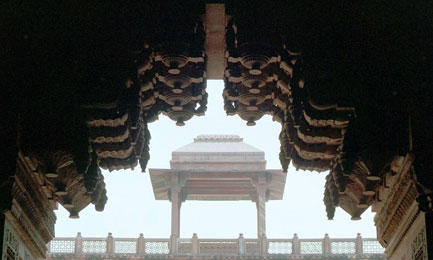
|
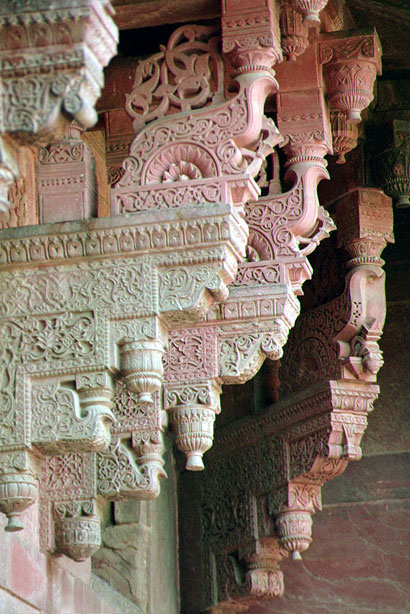
|
Journal
continued: Another part of the town is the mosque with the temple dedicated to the guy who "granted" a son to Akbar. It was a marble enclosure that looked like lace walls as well. It was filled with people asking for babies... they are crazy for babies here. |
Above: Just
a few roof supports. These elaborate sandstone carvings are par for
the course at Fatehpur Sikri.
|
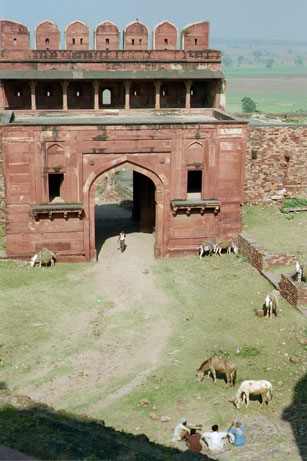
|
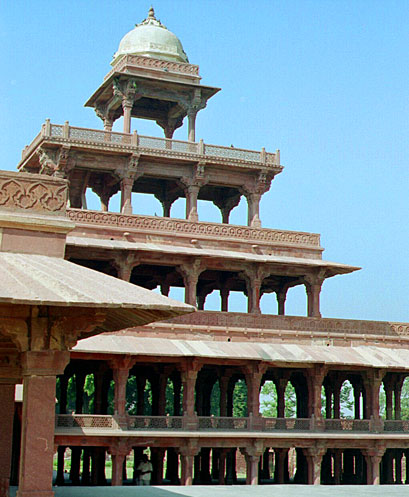
|
Journal
Continued: |
| Above: Panch
Mahal -- A special five tiered palace once used by the ladies of the court
used to have stone screens to ward off intruding eyes. This would have
been an ideal place to take in some fresh air and wind without having
to leave the protection of screens. Right: Inside the treasury building, many people, including this Indian family enjoyed playing hide and seek amongst the columns of this very oddly laid out room. |
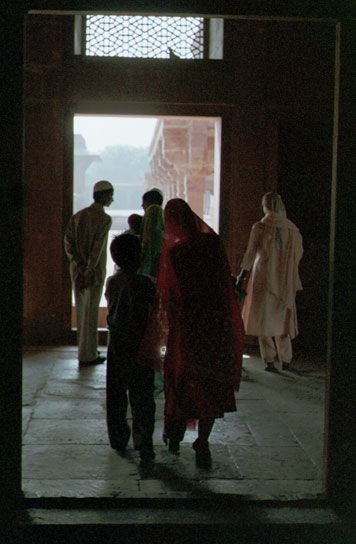 |
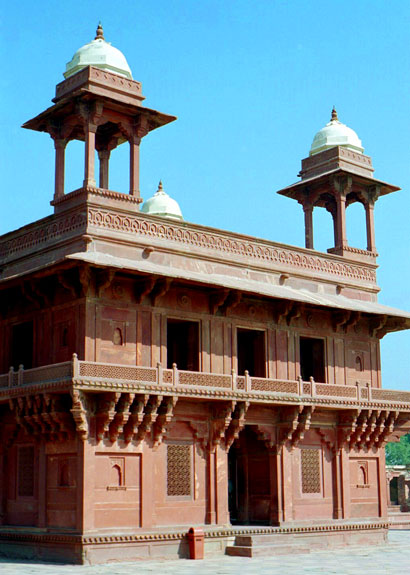
|
Left: Diwan-i-Khas, is the hall of private audiences and inside there is an amazing carved pillar in the center which flares at the top with four bridges which connect to the four corners of the building. This is where Akbar is believed to have debated with scholars of different religious persuasions. |
| Right: This man doesn't look that pleased. He has a host of marigolds, and no takers just yet. Still, it is early in the morning-- buyers might come soon. | 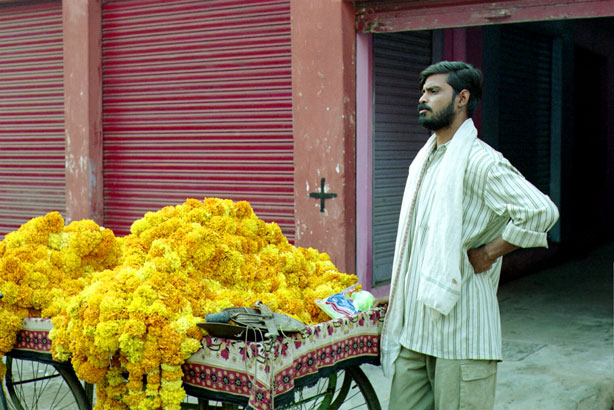
|
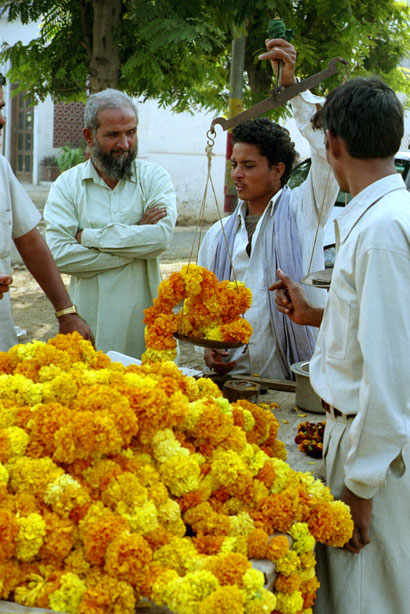
|
Left: More and more marigolds. In India they are sold by the pound before a festival. I believe for about ten rupees you can buy all the marigolds on the scale.
|